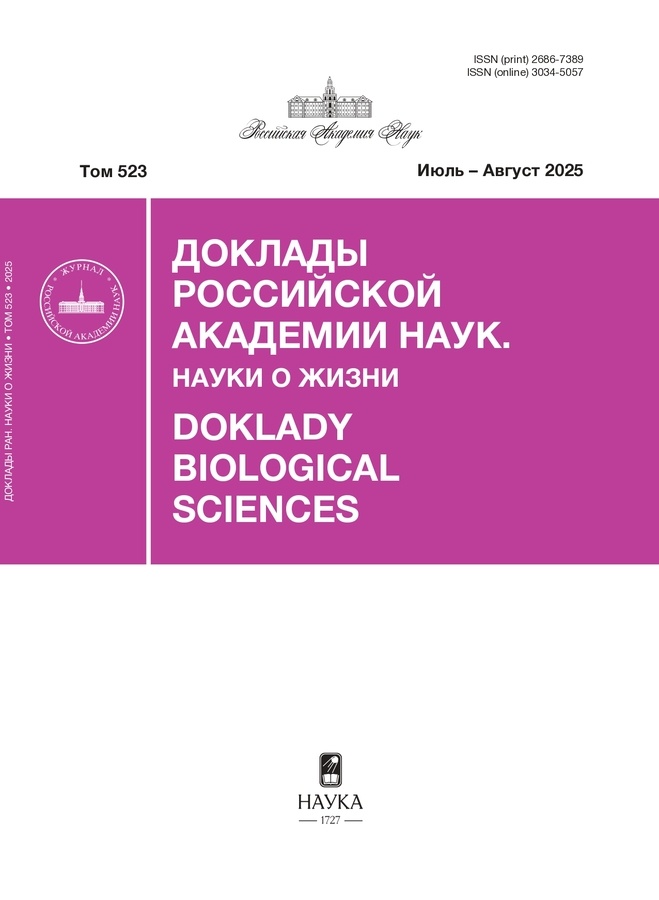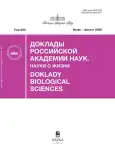Ассоциация суточной динамики числа случаев острого инфаркта миокарда с распределением всплесков в показаниях TINI-детектора
- Авторы: Дамбаев Г.Ц.1, Ерофеев В.Я.2, Гарганеева А.А.3, Кужелева Е.А.3, Округин С.А.3
-
Учреждения:
- Сибирский государственный медицинский университет
- Институт мониторинга климатических и экологических систем СО РАН
- Научно-исследовательский институт кардиологии, Томский национальный исследовательский медицинский центр Российской академии наук
- Выпуск: Том 523, № 1 (2025)
- Страницы: 462-468
- Раздел: Статьи
- URL: https://journals.eco-vector.com/2686-7389/article/view/693508
- DOI: https://doi.org/10.31857/S2686738925040148
- ID: 693508
Цитировать
Полный текст
Аннотация
Ключевые слова
Об авторах
Г. Ц. Дамбаев
Сибирский государственный медицинский университетг. Томск, Россия
В. Я. Ерофеев
Институт мониторинга климатических и экологических систем СО РАНг. Томск, Россия
А. А. Гарганеева
Научно-исследовательский институт кардиологии, Томский национальный исследовательский медицинский центр Российской академии наукг. Томск, Россия
Е. А. Кужелева
Научно-исследовательский институт кардиологии, Томский национальный исследовательский медицинский центр Российской академии наук
Email: kea@cardio-томск.ru
г. Томск, Россия
С. А. Округин
Научно-исследовательский институт кардиологии, Томский национальный исследовательский медицинский центр Российской академии наукг. Томск, Россия
Список литературы
- Расулова В. В. Влияние климатических условий на возникновение острого инфаркта миокарда // Тверской медицинский журнал. 2023:1:1135–1161.
- Kuzmenko N. V., Tsyrlin V. A., Pliss M. G., Galagudza M. M. // Egypt Heart J. 2022:74(1):84.
- Bruno R. M., Taddei S. // European Heart Journal. 2015; 36:1152–1154.
- Русак С. Н., Еськов В. В., Молягов Д. И. и др. // Экология человека. 2013; 11:1–6.
- Козловская И. Л., Булкина О. С., Лопухова В. В. и др. // Тер. Архив. 2015; 9:84–90.
- Ерофеев В. Я., Кабанов М. В., Выборнов П. В., Комаров А. И. // ДАН. 2015. Т. 465. № 6. С. 727–731.
- Ерофеев В. Я., Кабанов М. В. // ДАН. 2019. Т. 484. № 6. С. 682–685.
- Gurevich A. V., Karashtin A. N. // Phys. Rev. Lett. 2013. V. 110. 185005.
- Erofeev V.Ya. // IOP Conf. Ser.: Earth and Environmental Science. 2021. 840:012022.
- Sidorenkov N. S. // Astronomical and Astrophysical Transactions. 2018. V. 30, N 2. P. 249–260.
- Erofeev V.Ya., Kabanov M. V. // IOP Conf. Ser.: Materials Science and Engineering. 2019:698(4):0044045.
- Владимирский Б. М. Космическая погода и биосфера – история исследований и современность. М.: URSS, 2016. 172 с.
- Panza J. A., Epstein S. E., Quyyumi A. A. // New England Journal of Medicine 325 (1991). Р. 986–990.
- Гарганеева А. А., Округин С. А., Борель К. Н. // Сибирский медицинский журнал (г. Томск). 2015. Т. 30. № 2. С. 125–130.
- Eisenberg M. S., Bergner L., Hallstrom A. P., Cummins R. O. // Scientific American 254 (May 1986). Р. 37–&.
Дополнительные файлы











